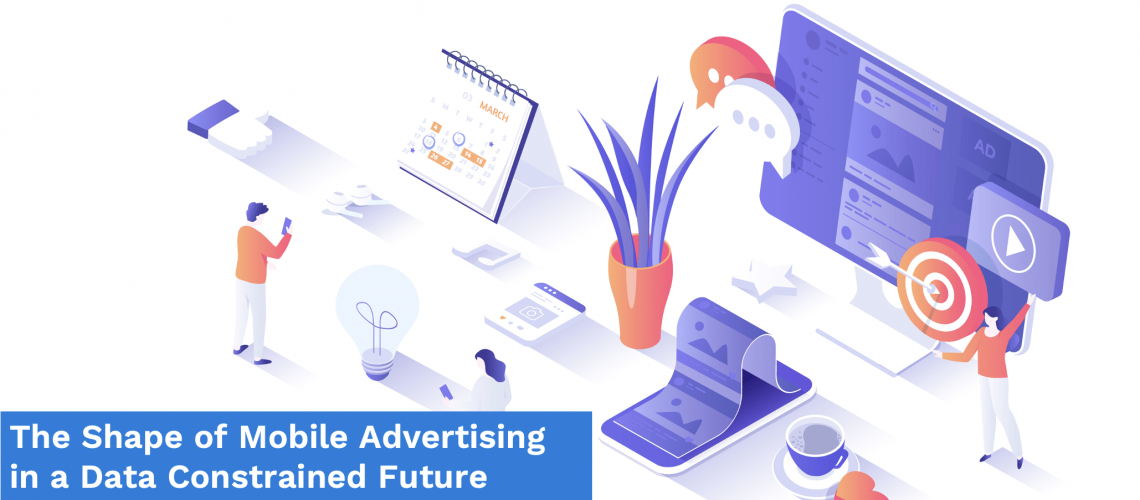The most complex digital advertising screen for any marketer or advertiser to tackle is the smallest one that lives in your pocket. The mobile screen is the dominant screen for everyday use, and the trickiest for marketers to navigate. Because of rising privacy regulations and moves by the big platform players to be compliant with these new rules, the state of mobile identity in advertising is undertaking massive change.
This new emphasis on user consent and data privacy now requires companies to obtain user consent before collecting and using their data. In short, using third-party cookies and mobile IDs for identification has become a lot harder.
Mobile ID usage is shifting toward more opt-in and consent-based models. For example, Apple’s iOS 14 now requires app developers to obtain user consent before tracking their own unique mobile ID. Google has also announced that it will phase out support for third-party cookies, which are commonly used for ad tracking, and introduce a new privacy-focused alternative called the Privacy Sandbox.
Apple’s Removal of the Device ID was a Seminal Moment
Apple has also introduced changes to its mobile advertising identifier (IDFA) to strengthen user privacy for its iOS. Google will also be restricting access to its advertising ID in Android, GAID, as well. Apple’s new consent-based system resulted in a US$10 billion plus drop in revenue for Facebook, as 70% of IOS consumers said no to tracking.
For marketers who want to reach their audiences on mobile, in this new privacy-led consent driven landscape, tracking and chasing your customer around the mobile web and app space is out.
Other models of mobile advertising targeting have emerged, as data signals are lost via the device ID data previously provided by Apple and Google.
Brands and advertisers have to be aware of the murky soup of privacy legislation, new rules around mobile web and app targeting, securing consent from consumers, or finding a way to secure access to anonymised mobile data.
Now, it’s all about forging partnerships with nimble and innovative mobile data specialists who know how to create probabilistic and contextual signal data that creates a proxy pool of the right audience for your mobile advertising campaign. In other words, ensuring that these new privacy rules and data restrictions do not hinder a brand’s performance goals.
If you consider that global retail sales were projected to amount to around US$31.7 trillion U.S. dollars by 2025, up from approximately US$23.74 trillion in 2020, it was inevitable that retail and digital advertising would come closer together. Digital players want a share of that retail spend, just as they want to increase their share of TV advertising budgets.
Related: iOS 14 Impact on Advertising: How Marketers can Adapt to Privacy Changes
Contextual Mobile Advertising Rises to the Fore

A brand can still serve mobile ads to a genuine prospect by deploying contextual advertising tools that provide useful data about the potential ad buy. That data can include location, device type, app metadata, and other contextual information signals.
The technology industry, especially adtech, is most powerful in a partnership context, and companies have formed alliances to assist brands in this new addressable audience world. Hence, you have major ecosystem players such as The Trade Desk, LiveRamp, and Yahoo! that provide anonymized data solutions that enable brands to run effective mobile data campaigns by deploying software that does not threaten data privacy rules, whether you want to reach audiences in the US, Southeast Asia, or Australia.
As Venturebeat noted at the start of the year, contextual signals can also be combined with other metrics, as the new data and competitive landscape emerges.
“For example, the number of interactions made with a specific feature of an ad identifies which part of the creative is adding value. Of course, this isn’t as precise as using the IDFA, but technologies like Machine Learning make it possible to ingest these signals and predict in real time the value of each ad impression with nearly the same level of accuracy as device ID-powered advertising.“
The Future of Mobile Audience Targeting is Dynamic
There may well be future mobile advertising regulation as regulators learn more about adtech. Earlier this month the Federal Trade Commission in the US issued a fine against a health provider, BetterHelp, noting that they consider hashed emails to be PII (personally identifiable information). In other words, health and mental health data is considered to be sensitive data. The FTC said BetterHelp must now enter a privacy compliance program.
This example demonstrates that companies that operate in the digital advertising sector worldwide need to be continually abreast of regulation changes.
For sure, we may see more data and privacy restrictions in the mobile advertising market. Taking a crisis by crisis approach will not work and every player in the ecosystem needs to continue with upskilling, and also ensuring that privacy-by-design is the modus operandi. That includes publishers and media owners as well as adtech providers.
“Adopting a new band-aid solution each time a new regulation arises is extremely inefficient. Wise publishers adopt solutions that are private by design while allowing for scale, typically cohort-based targeting with first-party data,” Emma Raz, director of commercial, NumberEight told ExchangeWire this month.
The mobile advertising industry is in a dynamic time and place. Multiple solutions and creative approaches to reaching the right audience on the most ubiquitous, yet smaller screen, will be required.


